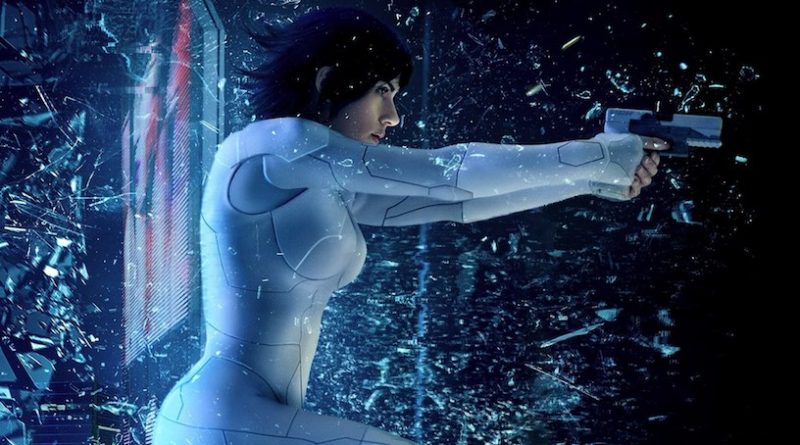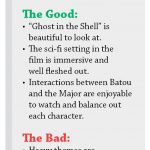Review: ‘Ghost in the Shell,’ a beautifully dull experience
“Ghost in the Shell” is an American live action adaptation of Masamune Shirow’s manga of the same name. The film, directed by Rupert Sanders, tries to do many things. On a conceptual level, it manages to bring a unique spin to the sci-fi setting where robotic technology has taken a strong hold over human society. The visuals that accompany this setting are also very beautiful to look at. Sadly though, issues with the plot and characters keep it from being as a great film as it could have been.
From the get go, “Ghost in the Shell” is an aesthetically beautiful movie. Fromt the massive city scape of futuristic Tokyo to the visually stunning robots, everything in the film manages to capture the viewer into a believable world. It fully employs the concept of what would happen if human beings focused on developing technology — primarily the robotics field. Technology corporations have taken a leadership role in this world as most citizens are outfitted with robotic enhancements. This allows the possibility of any number of different feats, such as communicating with each other over large distances without the need of a phone.
The film begins with the perspective of main character, the Major (Scarlett Johansson) as her brain, or “ghost,” is placed in a completely robotic body. This scene is one of the film’s most visually stunning moments and fully flexes the idea of robotic technology. After the operation, the Major is placed in a specialized police unit known as Section 9, which deals with cyber crimes. While on a mission, she comes across a cyber terrorist known as Kuze (Michael Pitt) and is forced to find and stop him before he can do any more damage to people and society.
“Ghost in the Shell” does a wonderful job in creating themes of identity and ownership, especially when the motives of Kuze are revealed. It also makes the audience think about what is right and wrong. However, the film only raises these questions and themes conceptually; it does not go farther to create its own answer to these questions. For example, is the Major still a human being even though her body is completely robotic? This question is never answered. The movie takes a morally gray approach, which causes the plot to be lackluster and disappointing.
Johansson portrays her role moderately well and is not displeasing to see when on screen. However, this cannot be said for the supporting cast. Other than the Major’s right-hand man in Section 9, Batou (Pilou Asbaek), the Section 9 members never really make any meaningful impact. Batou is the counter to the Major’s character, so they balance each other nicely. Her personality is colder, while Batou is more human and charismatic. Batou also brings out the more compassionate characteristics of the Major through their dialogue. One of their more memorable moments is when they are walking through the streets of Tokyo, feeding some stray dogs. This scene also brings emersion to the setting of the film. This version of Tokyo feels as though it could really be what the city looks like in the near future. With a science-fiction movie, it is important to show how that world is scientifically advanced, and with Tokyo in “Ghost in the Shell,” it is obvious just how advanced robotic technology is in this universe. This can be seen in the interactions of the Section 9 members being able to communicate with their minds.
“Ghost in the Shell” is a flawed experience. Fans of the series will be able to enjoy the film because of the visuals, while others will be bored due to the inadequate execution of themes in the plot. It’s disappointing to say that “Ghost in the Shell” had the ability to be a great movie, but issues with both its narrative and supporting characters kept it from being amazing.








